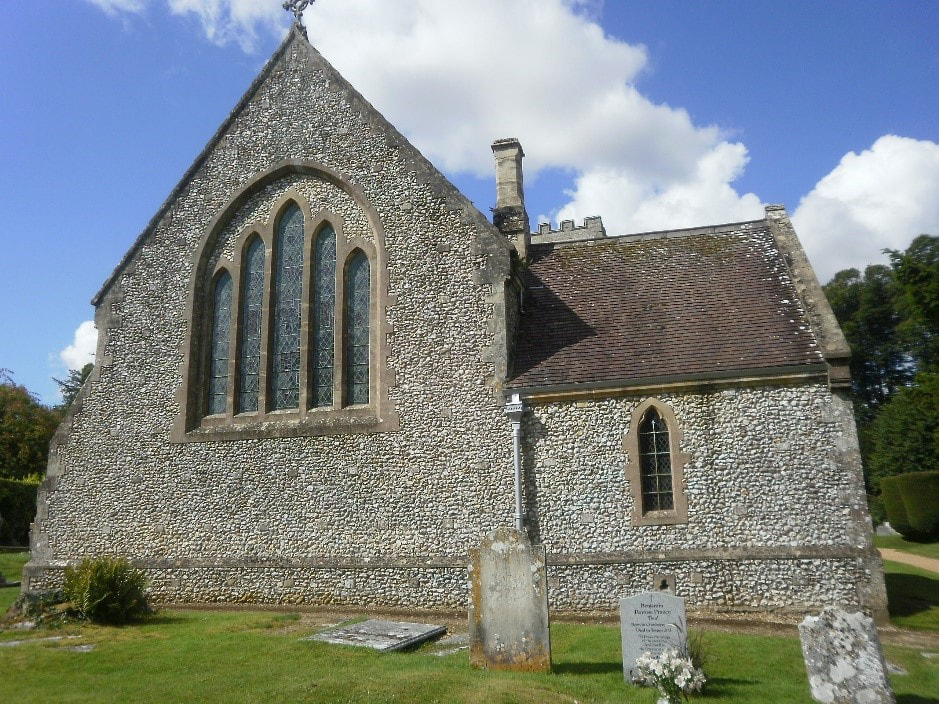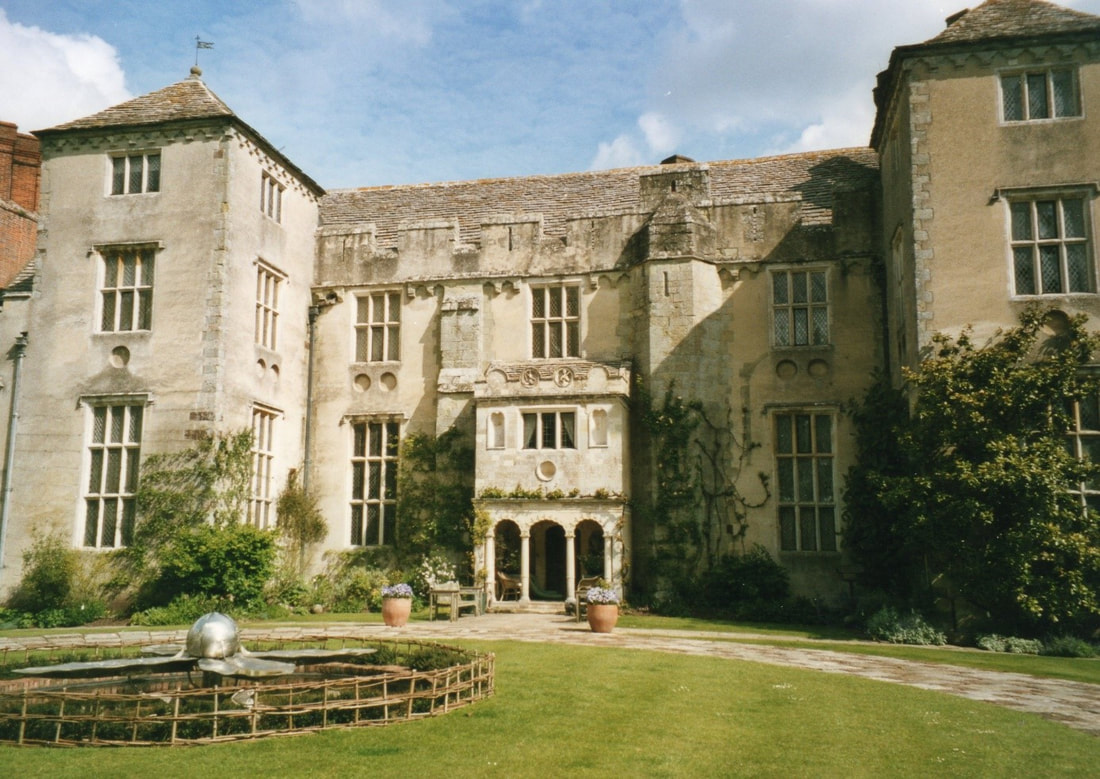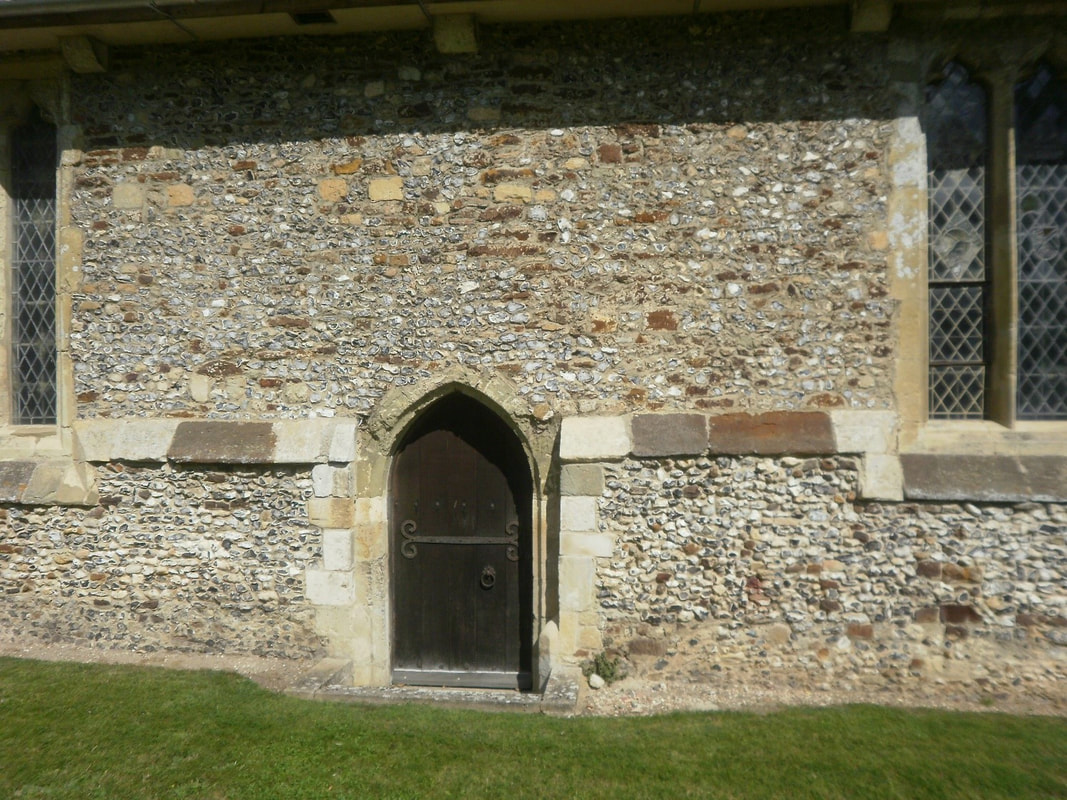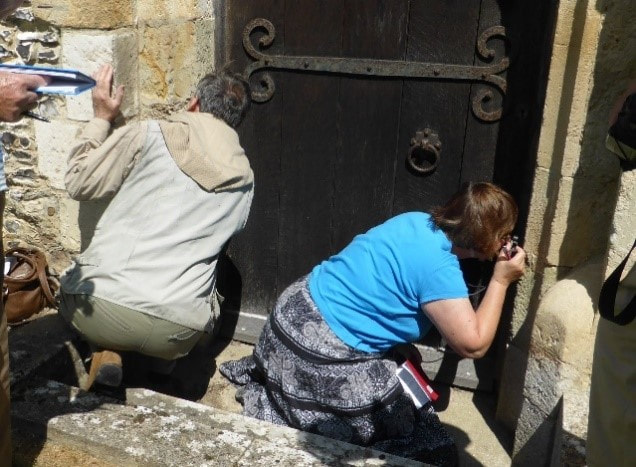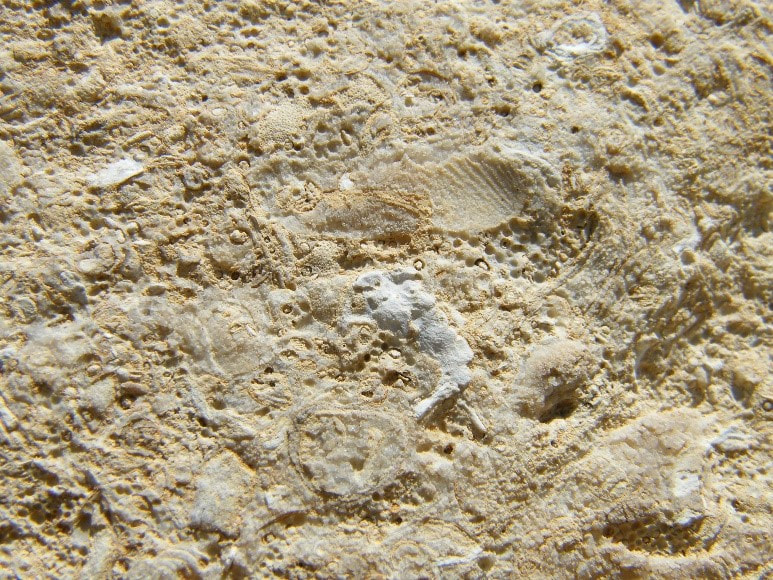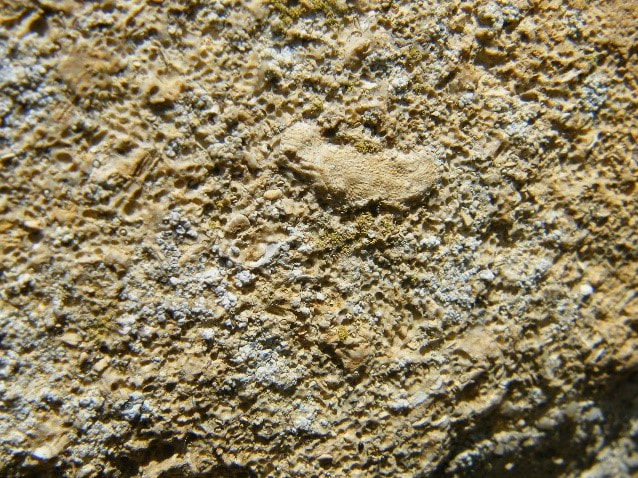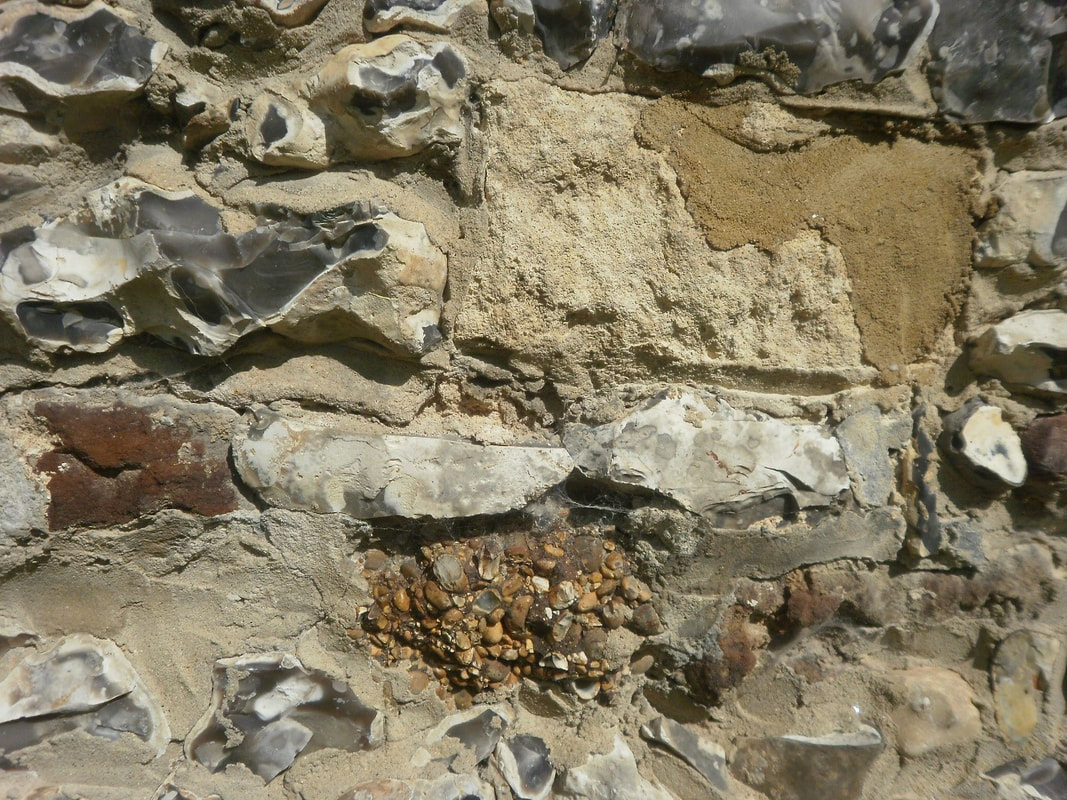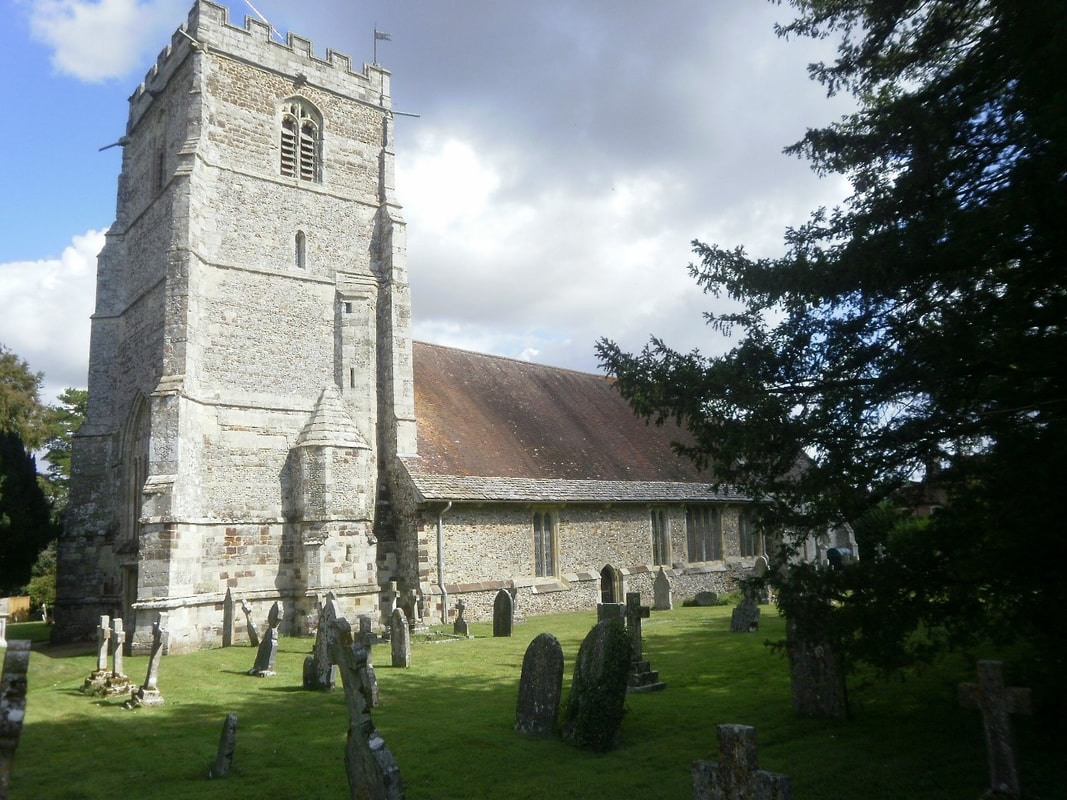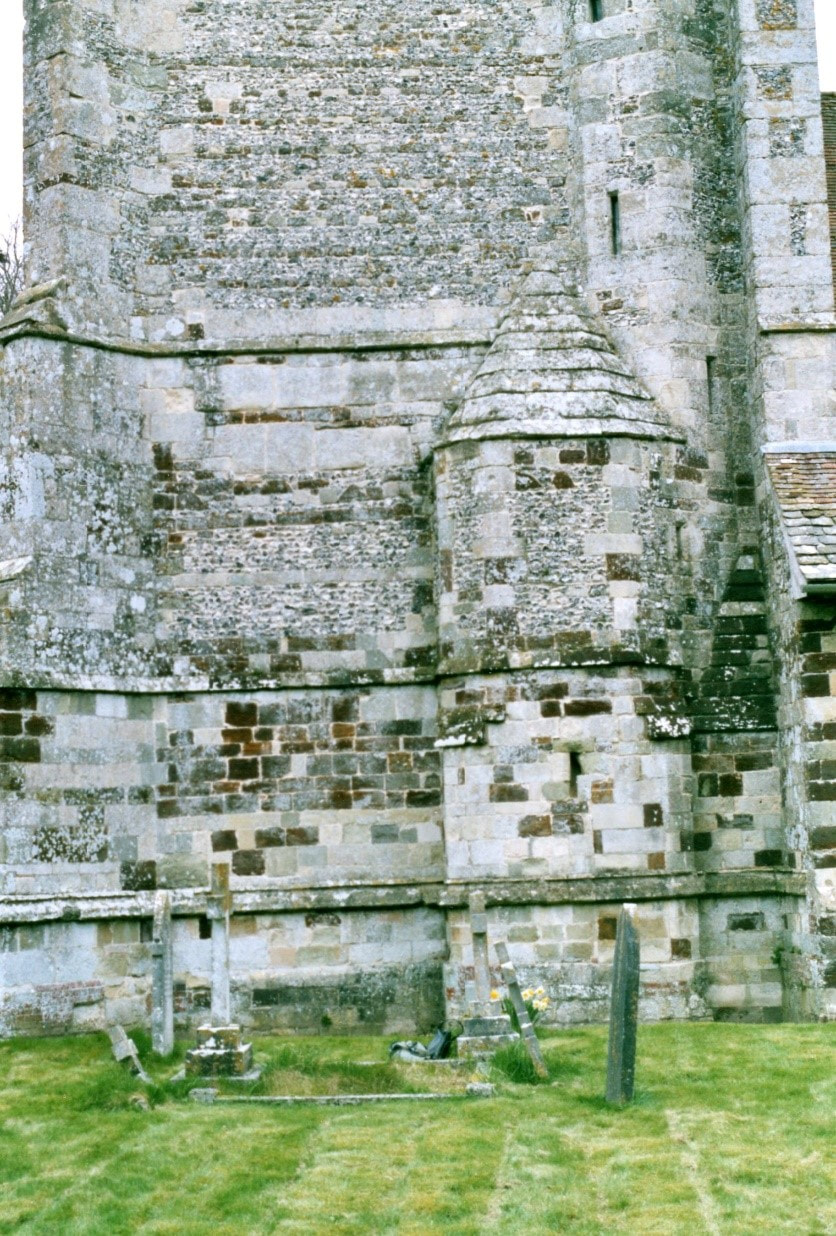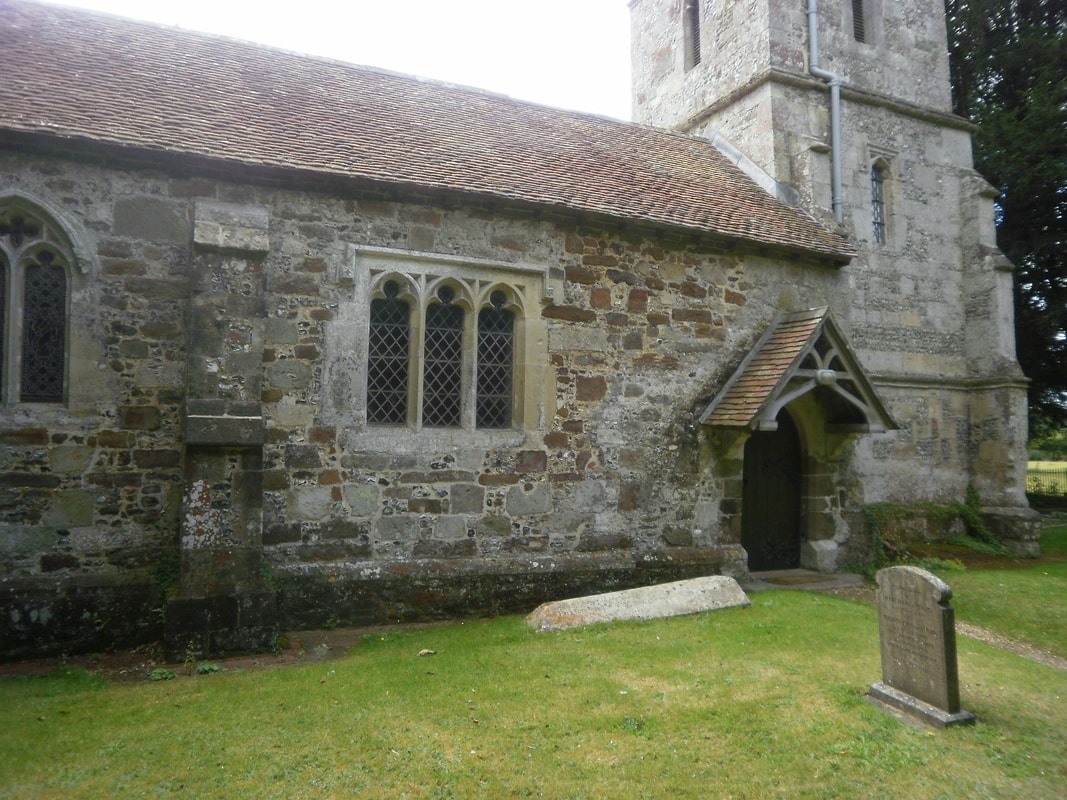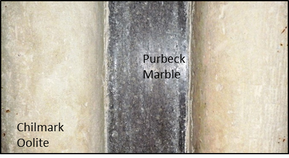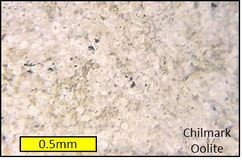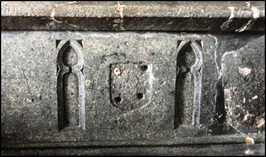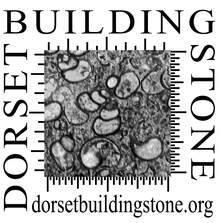St. Mary and St. Bartholomew, Cranborne (Lead author: JT)
The Parish Church of St. Mary & St. Bartholomew was built in the 12th century on the site of a 10th century monastery, but the present church is 14th and 15th century, with a 19th century chancel & vestry. Entering the churchyard from the east gate, the chancel built after 1850 (1875 date on the vestry) is faced in whole Flints of matching roundness and with the white ‘skin’ retained. The windows are Bath Stone. The church uses Flint and Upper Greensand with Chilmark stone and courses of ‘Heathstone’, the iron-cemented sandstone found at several levels in the London Clay. 19th century work includes Bath Stone.
The 14th century north aisle has walls of rough flint with some Chilmark Main Building Stone and some Heathstone. The east window is Chilmark Main Building Stone, and the western one has some Heathstone.
South wall 14th c of knapped flint, with patches of heathstone and cream stone with ooliths (or completely rounded sand grains) in window, some blocks have shell debris, like Pentridge; similar to 13th c window cills at Wimborne Minster. One block of greyish stone has moulds of bivalves and turritella like gastropods – this is similar to Roach, and has been described in Bill Wimbledon’s paper. These descriptions are in accordance with descriptions of different beds of Chilmark stone in Howe J.A., 1910: Priests Door of Upper Greensand.
Interior – Purbeck Marble font and tomb chest. Canopied tomb with 2 figures , very fine white/grey stone. Nave pillars variable, fine featureless stone. In the interior the nave and aisles are Early English 14th century design. There are five composite columns with massive Purbeck Marble shafts outlined with four rounded columns of Chilmark Oolite. On the south there are three, the first, third and fifth, on the north the first and fifth only, as the central composite column was replaced in the 19th century. This last has been built to match the second and fourth on each side, that are octagonal, and also Chilmark Oolite. Purbeck Marble was also used for a tomb.
References
Hammond M 1993: list of brickworks for DCC building materials survey.
Howe JA, 1910: The geology of building stones. Donhead reprint 2001.
Map in Penn 1980: Historic Towns of Dorset.
Wimbledon WA 1976: The Portland Beds (Upper Jurassic) of Wiltshire. Wilts. Nat. Hist & Archaeol. Soc. Mag.
Young, D., 1972, Brickmaking in Dorset. Dorset Proceedings, vol. 93, 213-42.
24th August 2014 © Jo Thomas.
Hammond M 1993: list of brickworks for DCC building materials survey.
Howe JA, 1910: The geology of building stones. Donhead reprint 2001.
Map in Penn 1980: Historic Towns of Dorset.
Wimbledon WA 1976: The Portland Beds (Upper Jurassic) of Wiltshire. Wilts. Nat. Hist & Archaeol. Soc. Mag.
Young, D., 1972, Brickmaking in Dorset. Dorset Proceedings, vol. 93, 213-42.
24th August 2014 © Jo Thomas.

